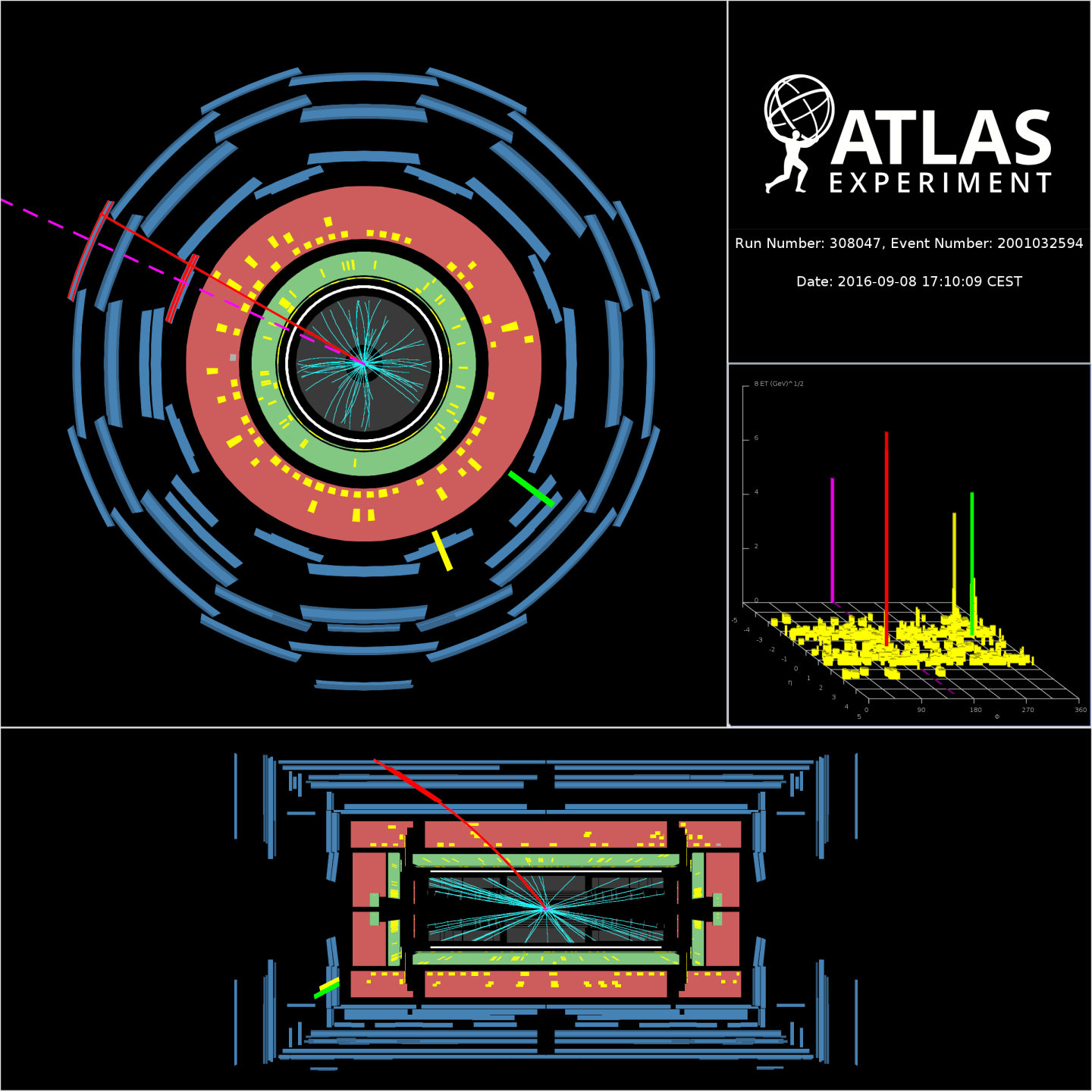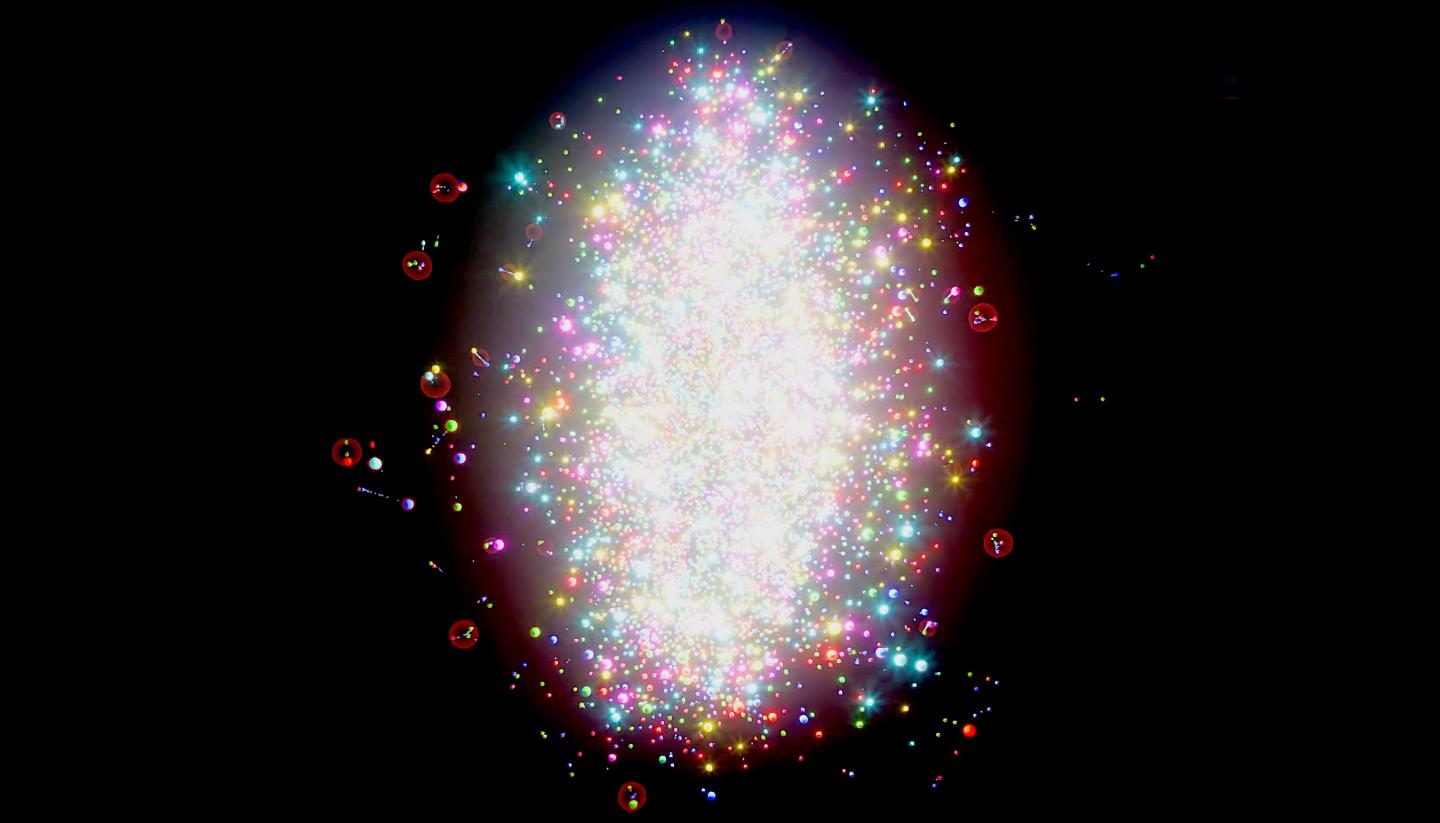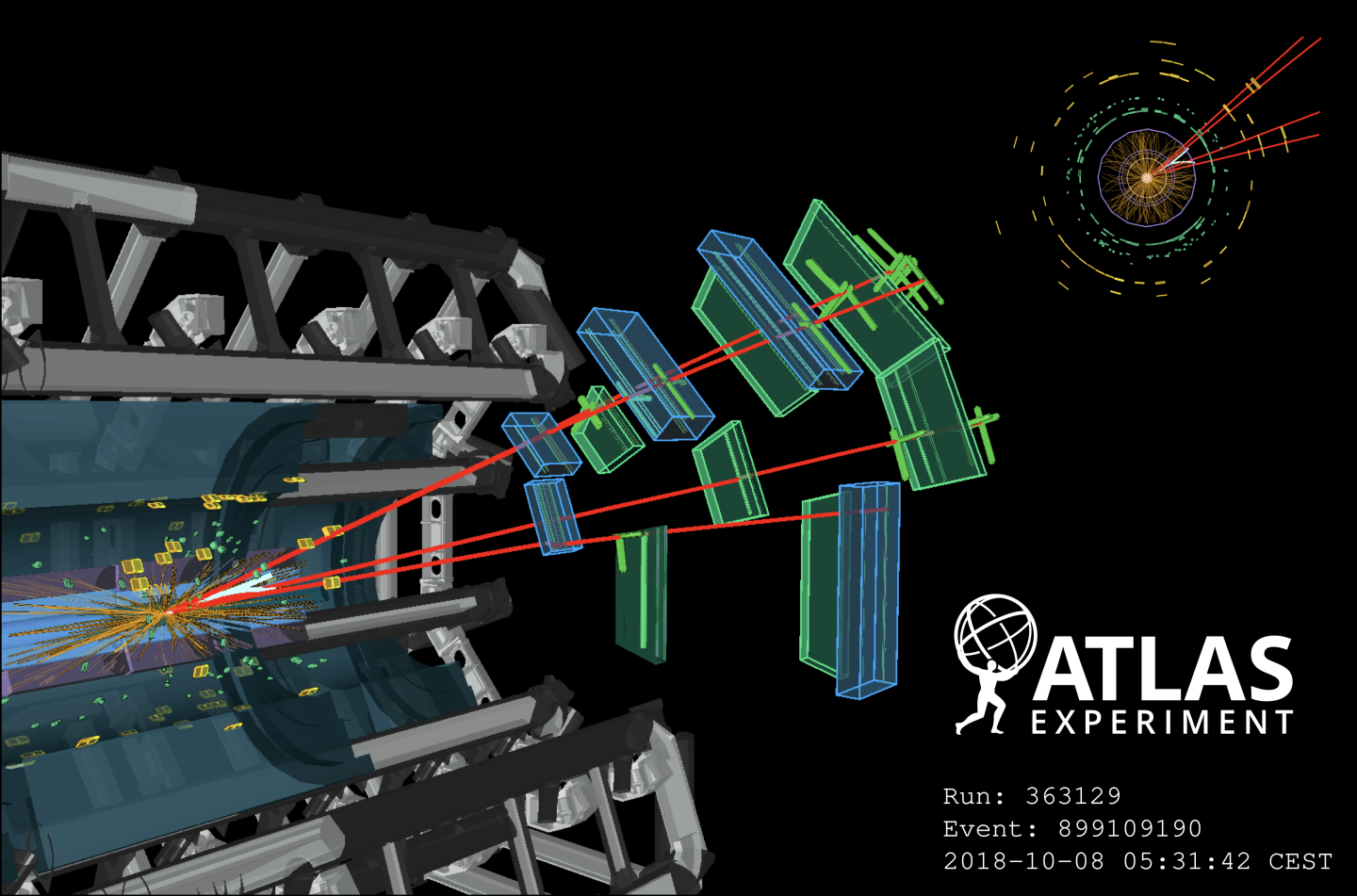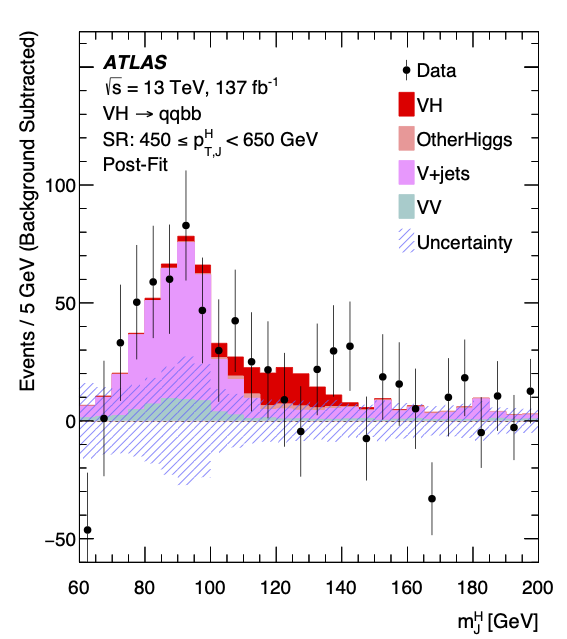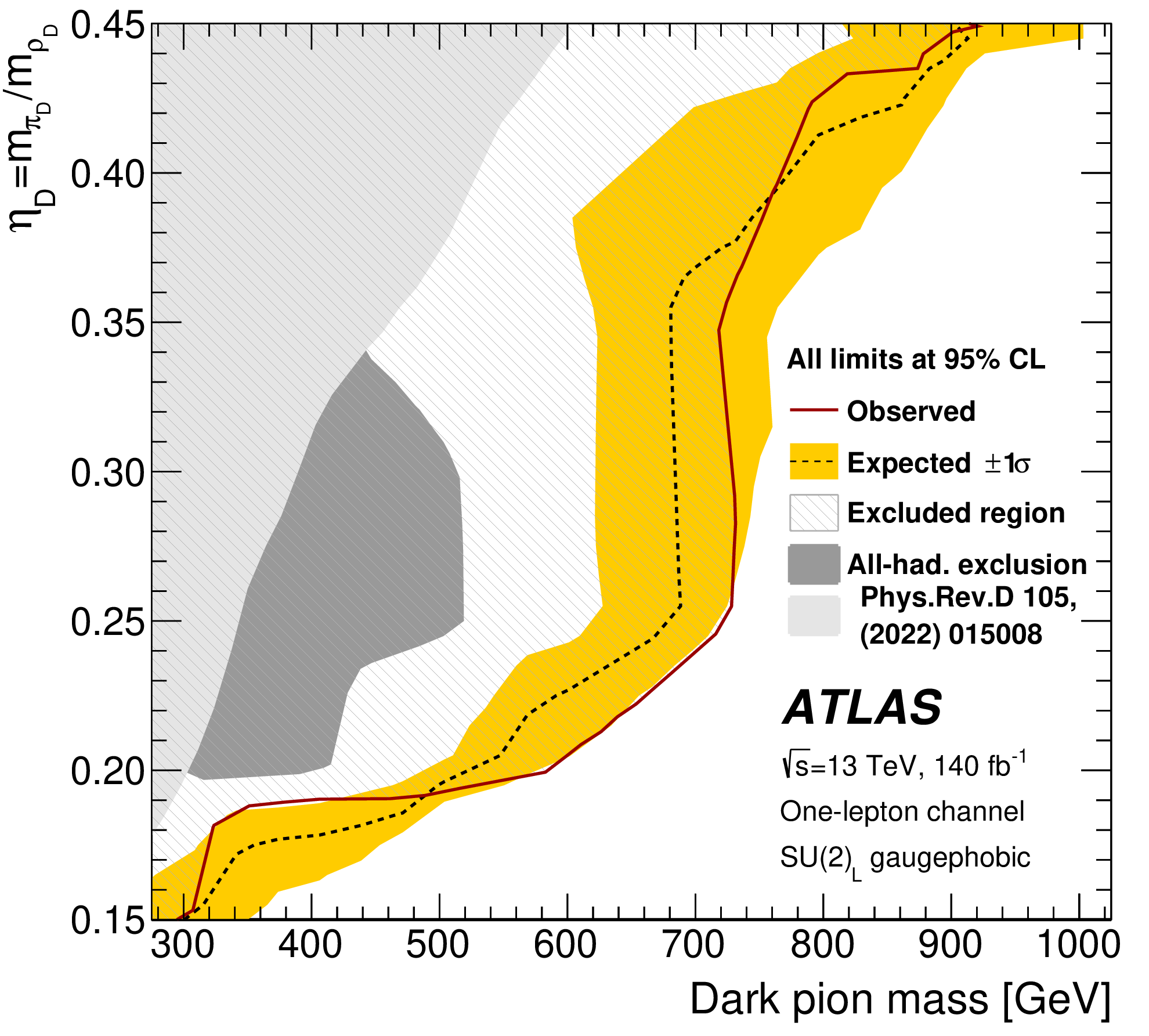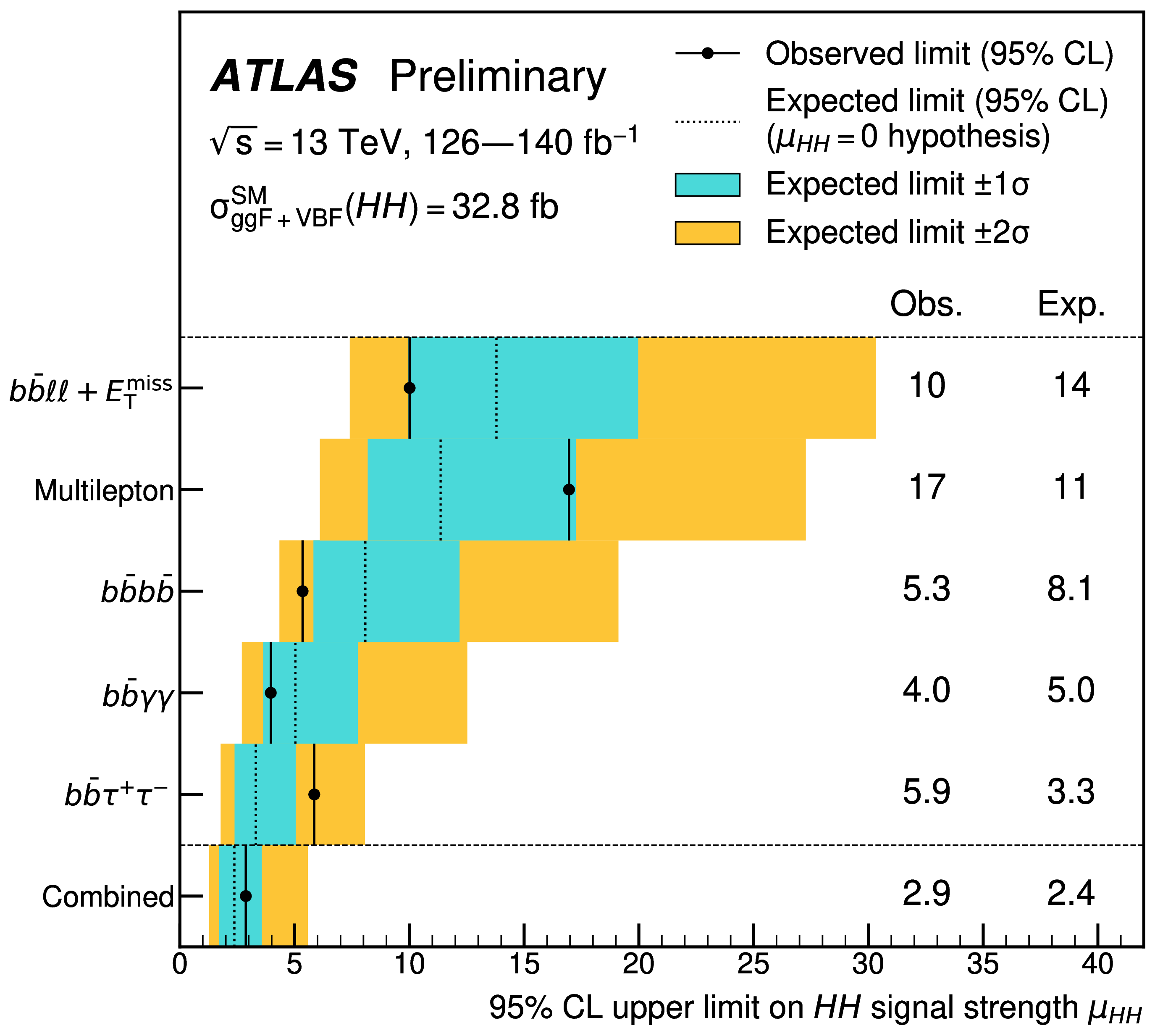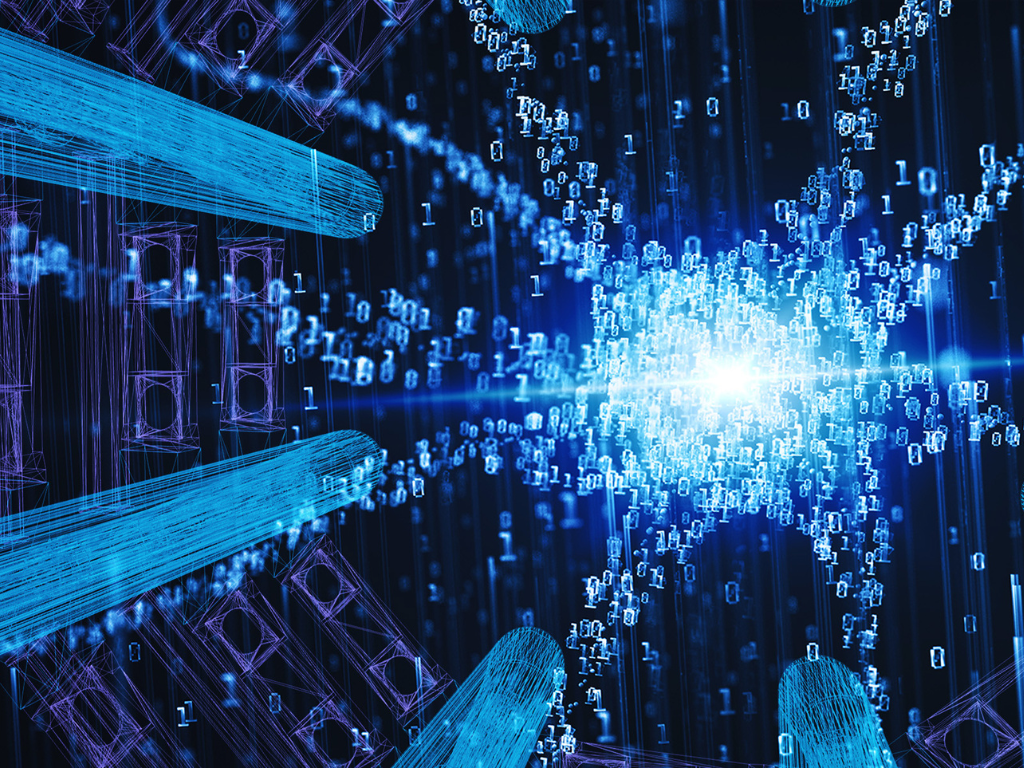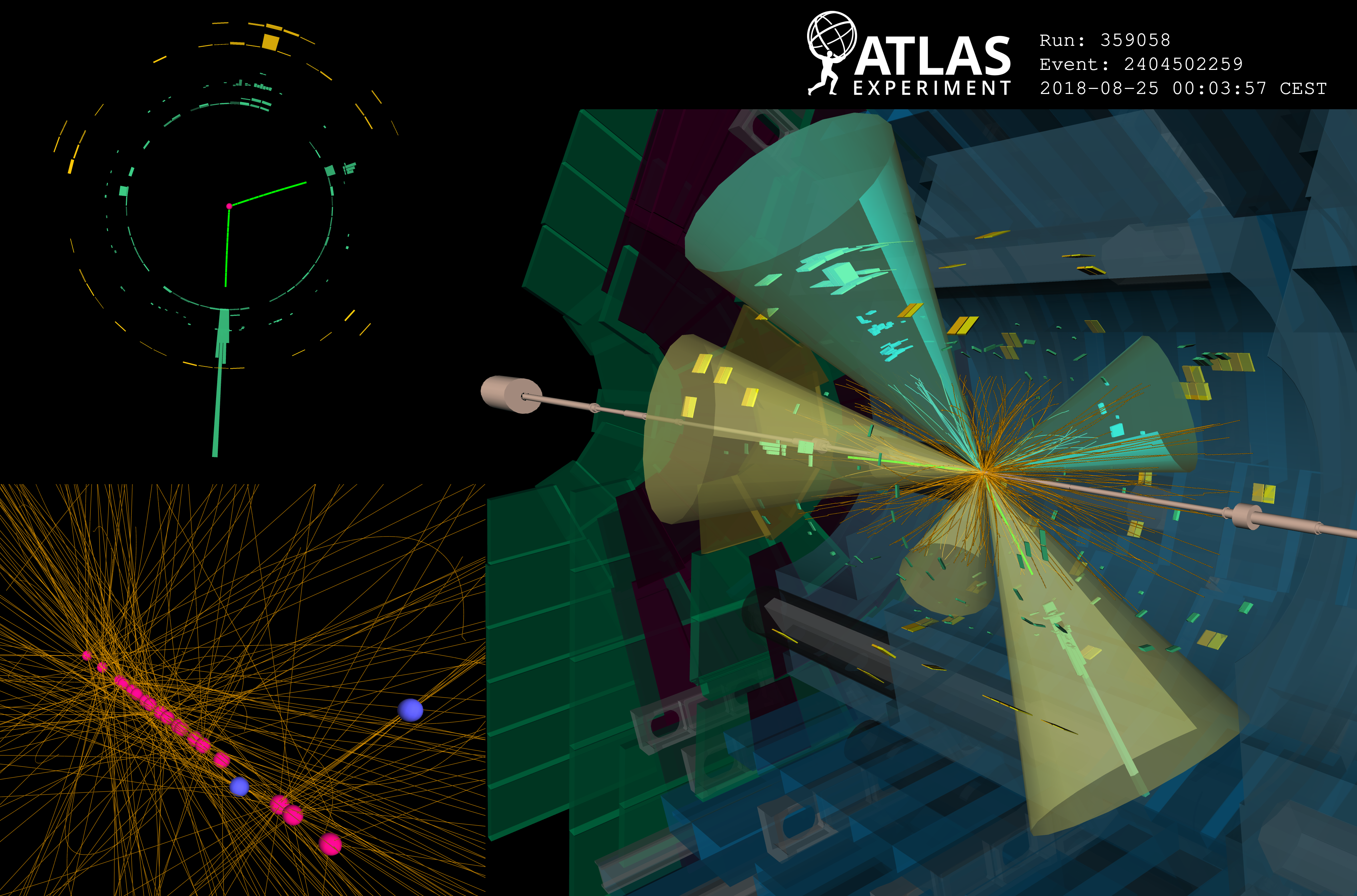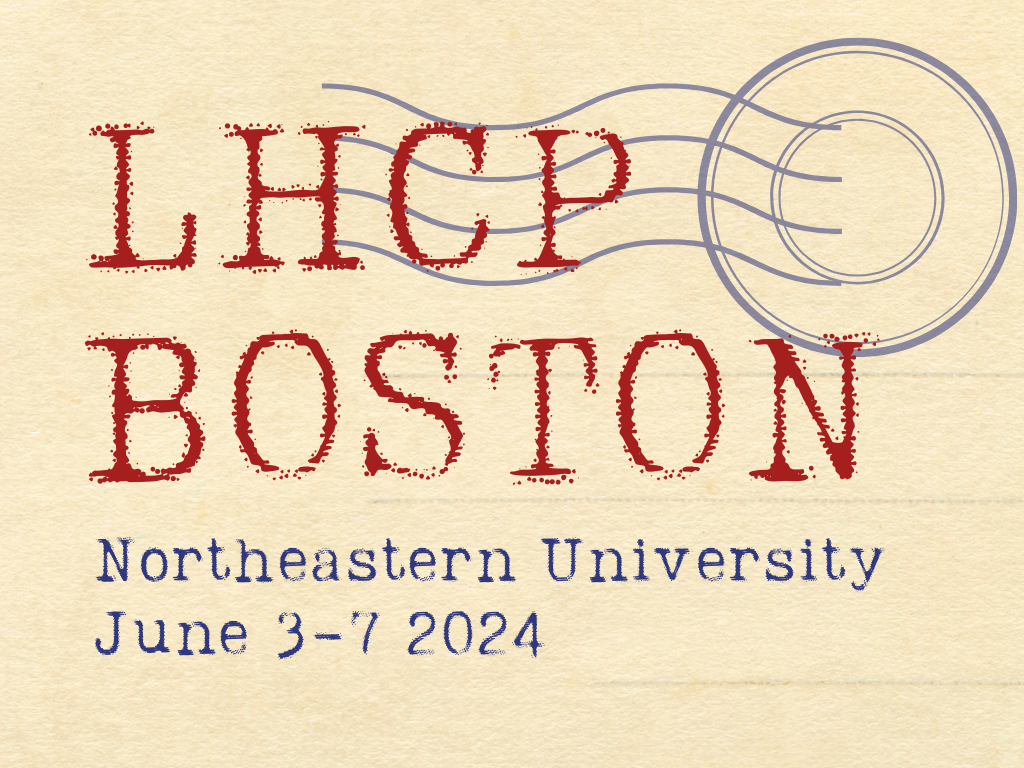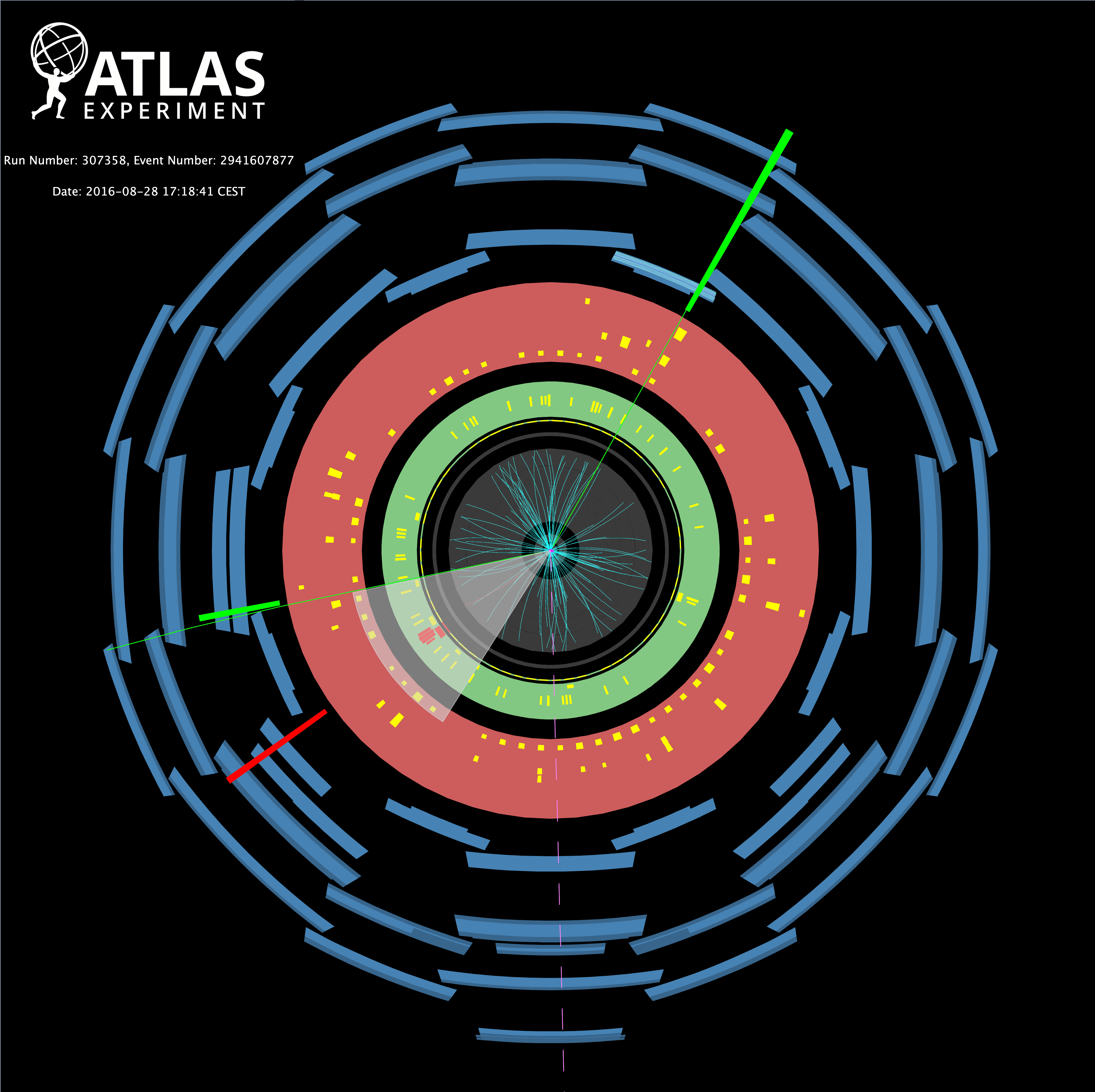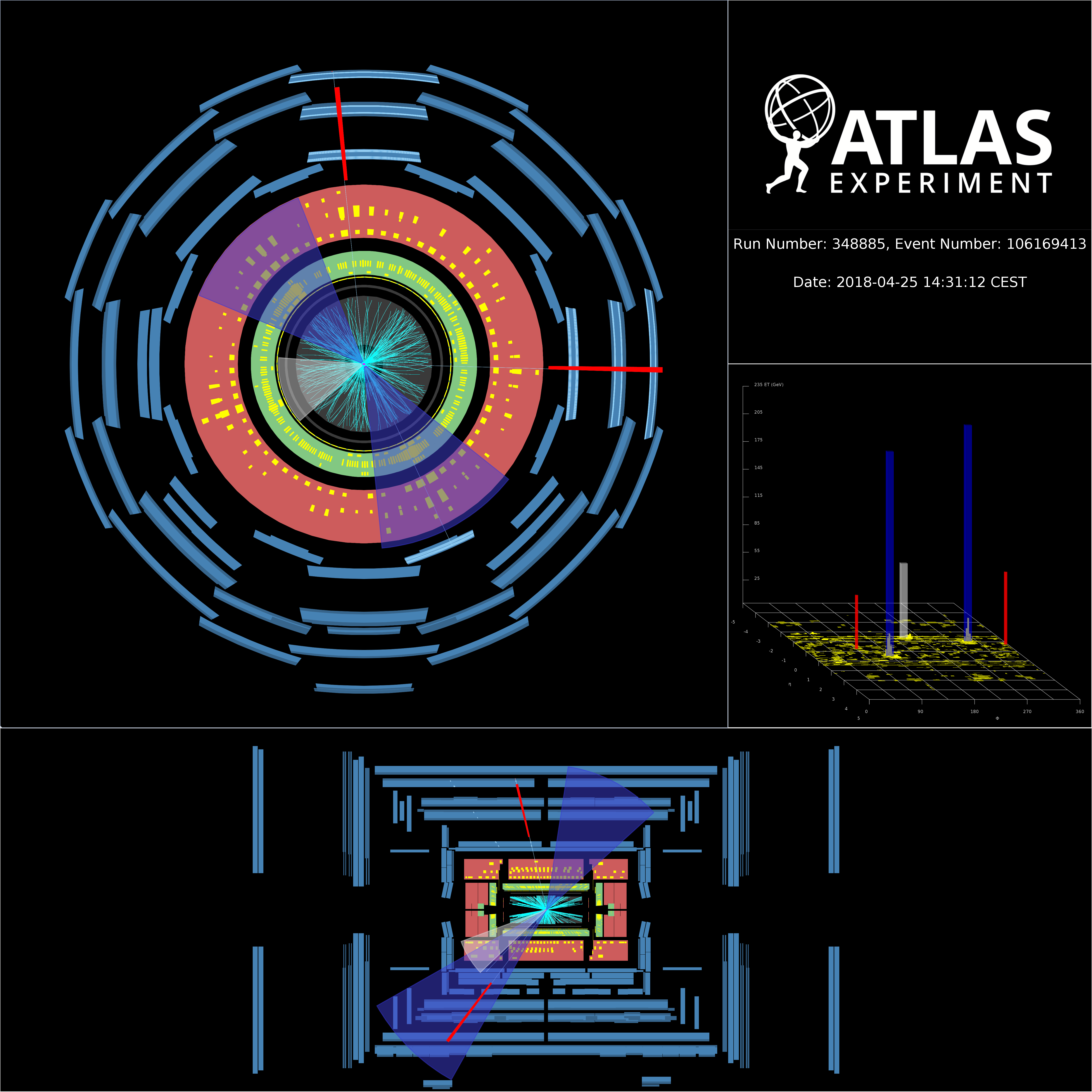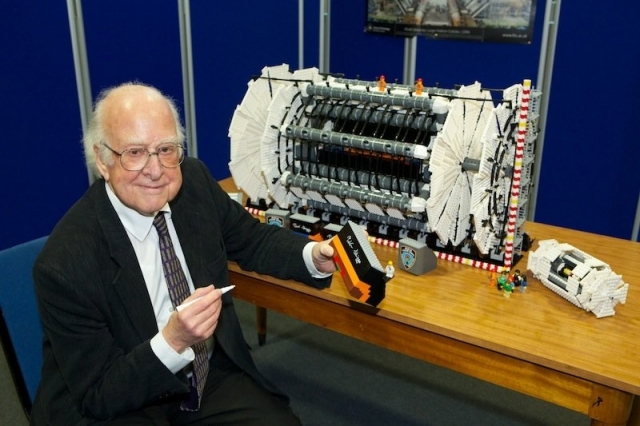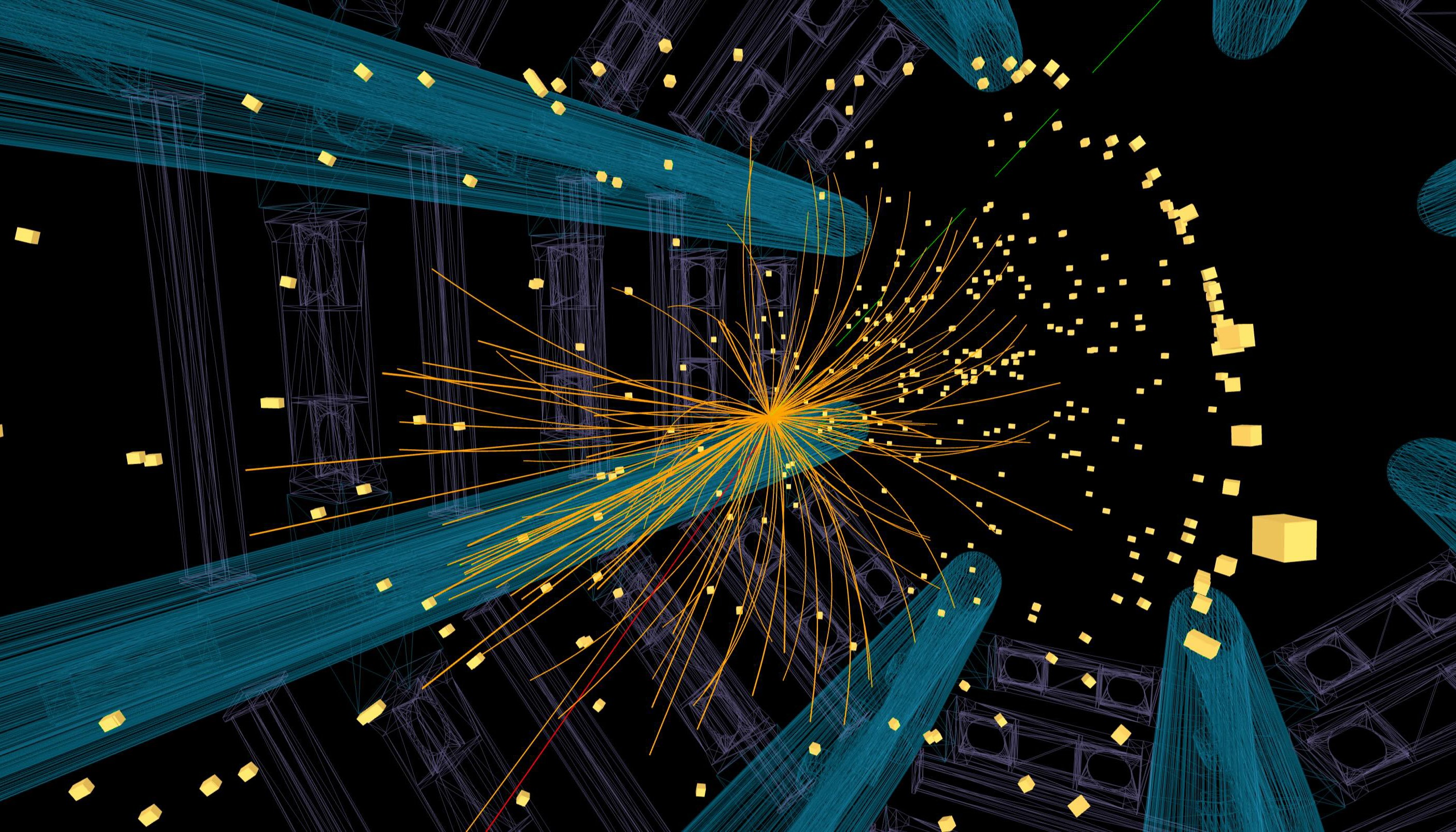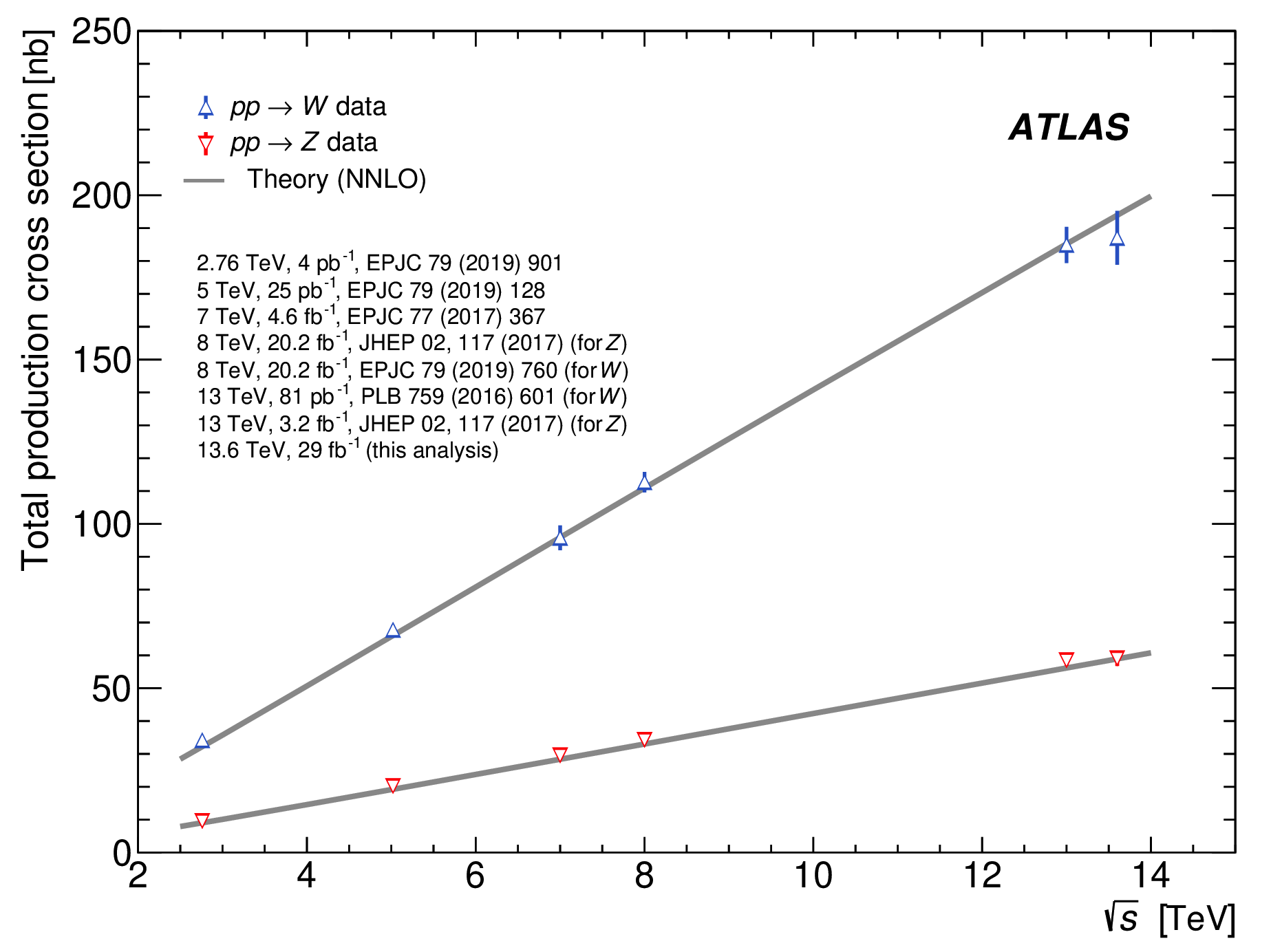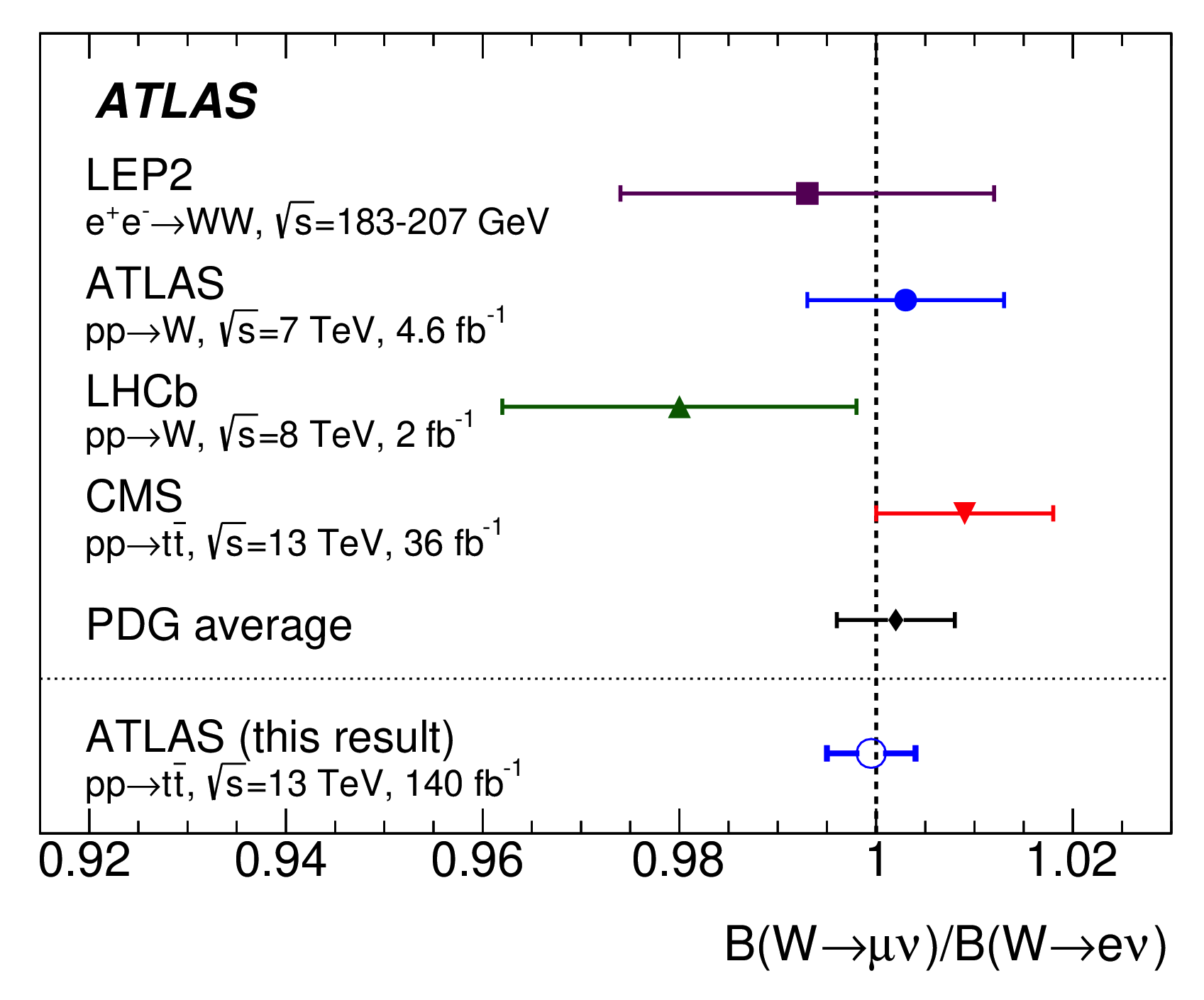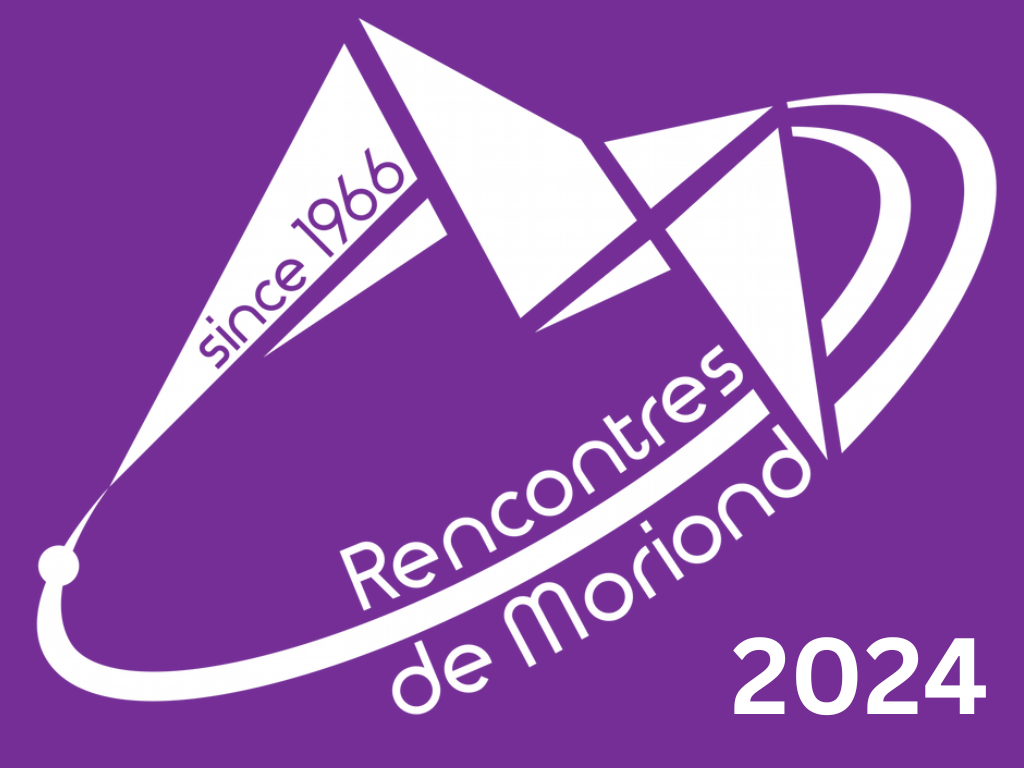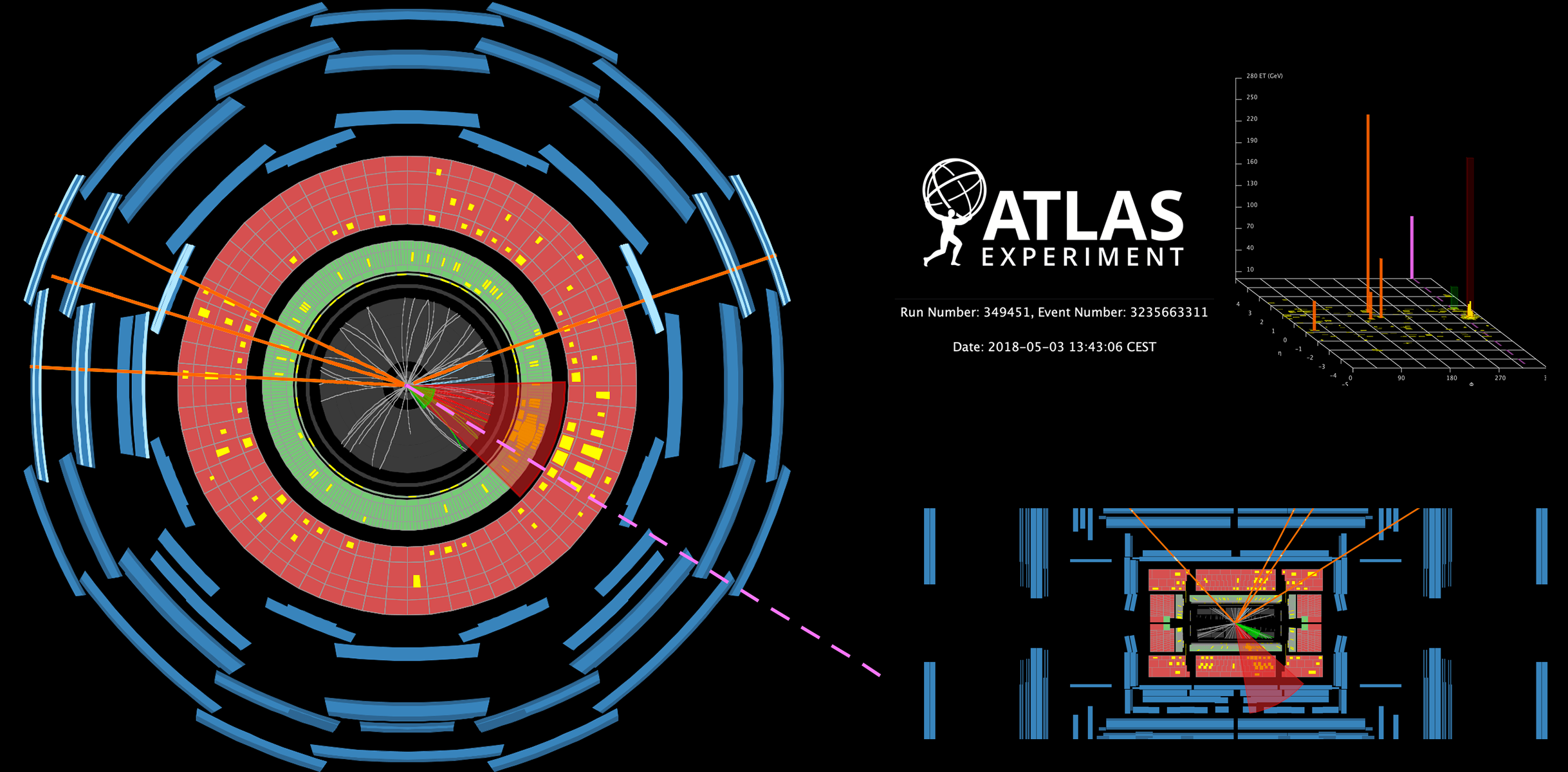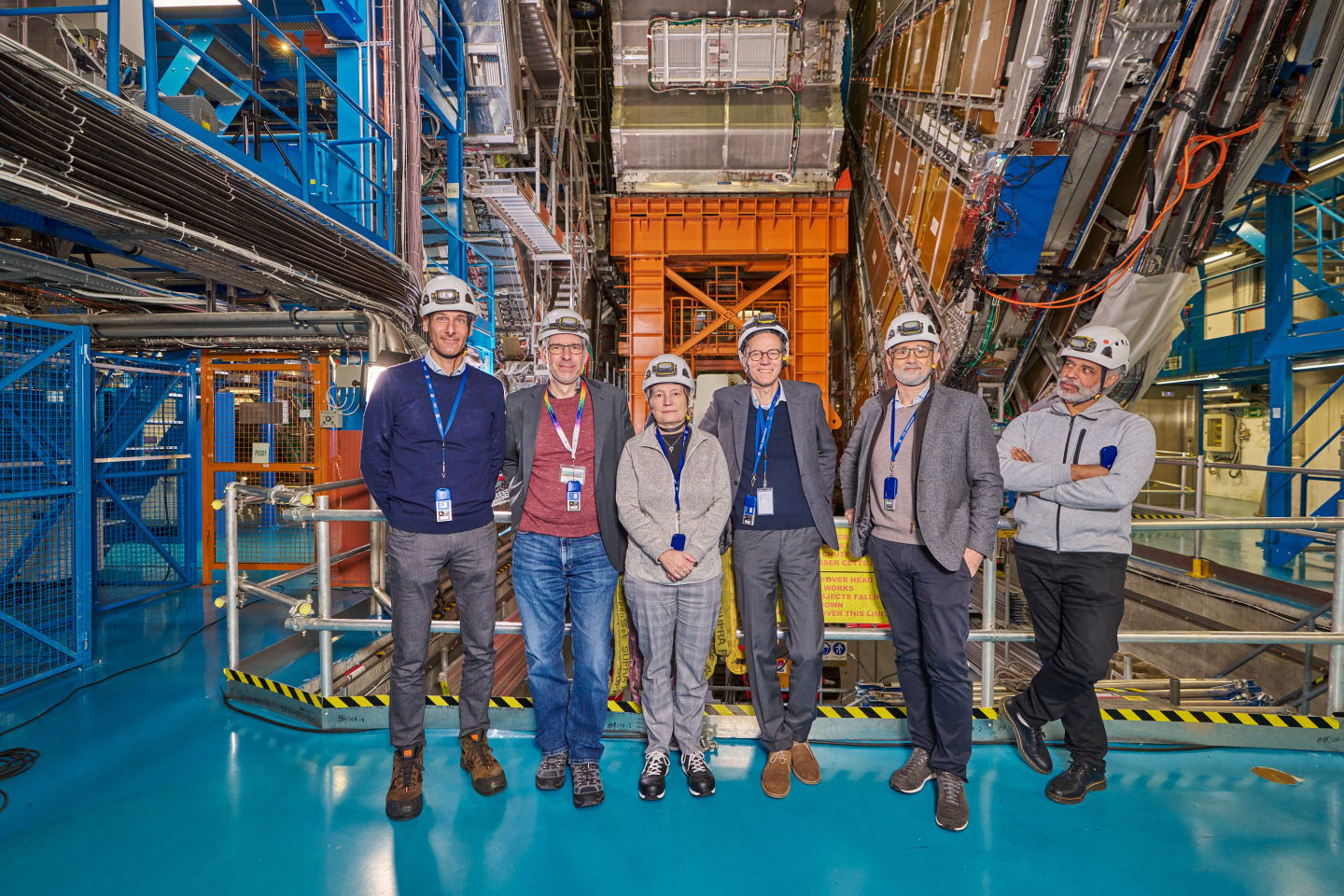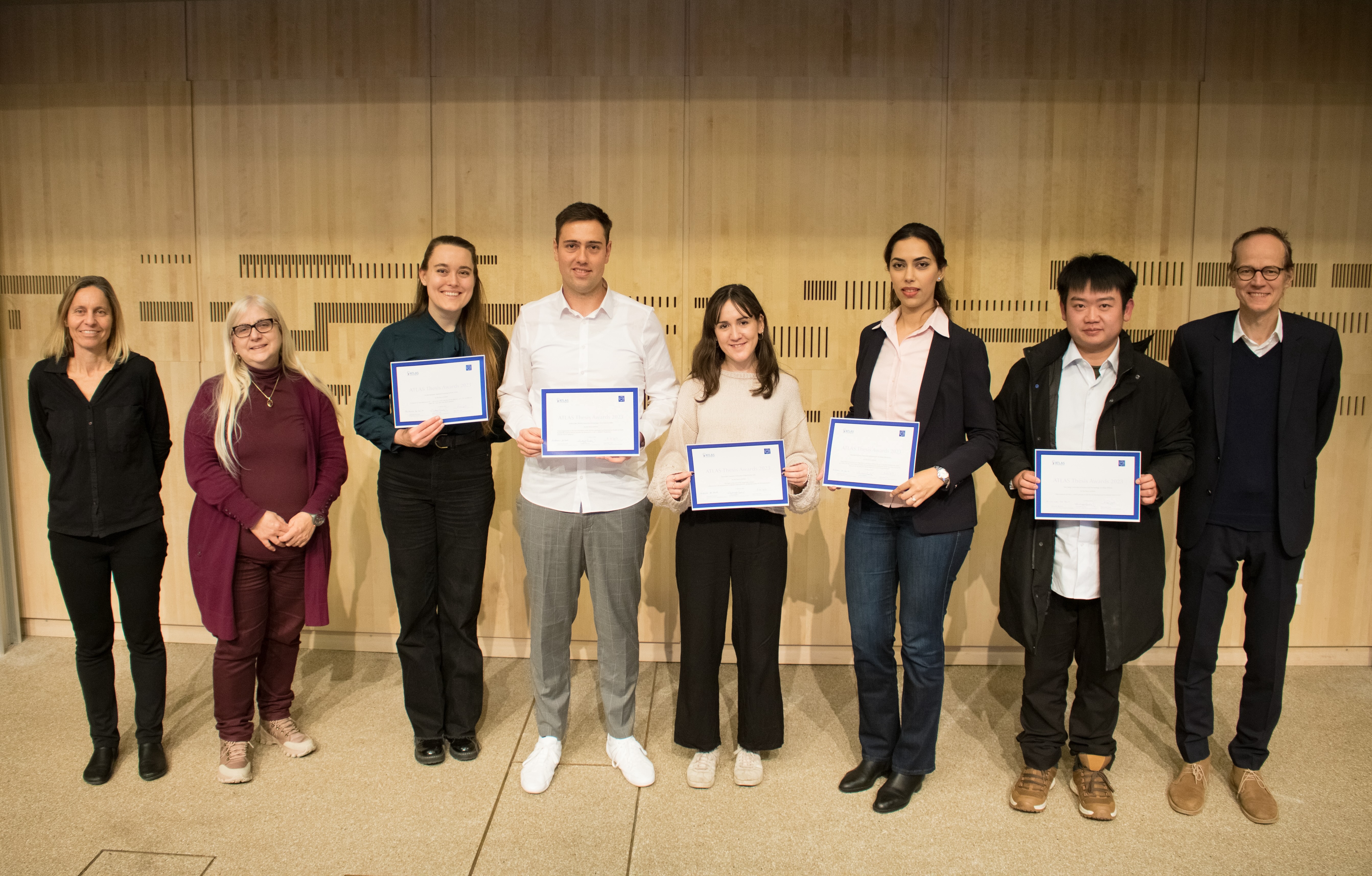Celebrating excellence at the 7th ATLAS Outstanding Achievement Awards
The ATLAS Collaboration held the 7th Outstanding Achievement Awards Ceremony on 20 June 2024. These biennial awards recognize the invaluable technical work performed across the Collaboration in various fields.
News |
Jetting into a new era of Higgs studies
The ATLAS Collaboration has made a significant advancement in the understanding of the Higgs boson by investigating its production in association with W or Z bosons (known as “VH production”), where the Higgs boson decays to bottom quarks. For the first time, LHC researchers have studied VH production in a fully hadronic final state.
ATLAS searches for the building blocks of dark matter
Researchers at the ATLAS Experiment release the first-ever direct search for new composite dark particles called dark mesons, presented this week at the Large Hadron Collider Physics (LHCP) Conference in Boston.
ATLAS dives deeper into di-Higgs: a combined search
In a new analysis from the ATLAS Collaboration, physicists merged five di-Higgs studies of LHC Run 2 data. By combining the power of all these decay channels, researchers achieved the most sensitive probe of di-Higgs production and the Higgs self-coupling.
News |
Learning by machines, for machines: Artificial Intelligence in the world's largest particle detector
Julia Gonski explains the long-established use of artificial intelligence and machine learning (AI/ML) in high-energy physics research and explores the exciting potential these technologies hold for the field.
Feature |
ATLAS chases long-lived particles with the Higgs boson
In a new study submitted to Physical Review Letters, ATLAS scientists used a new algorithm to search for long-lived particles (LLP) produced in the decay of Higgs bosons. These LLPs may leave a distinct signature of one or more hadronic “jets” of particles originating at a significantly displaced position from the proton–proton collision point.
Summary of new ATLAS results from LHCP 2024
The twelfth annual conference on Large Hadron Collider physics (LHCP 2024) kicks off today in Boston, USA. This week-long event will feature a detailed review of the latest experimental and theoretical results in collider physics, including several final studies of the LHC Run-2 dataset (collected in 2015-2018) and discussions on future research directions for the high-energy particle-physics community.
News |
Looking for the extended family of the Higgs boson
The ATLAS Collaboration has just published a search for two new Higgs bosons, X and S, that would interact with the Standard-Model Higgs boson.
Menu of the day: Di-Higgs soup!
If spotting one Higgs boson is interesting, what happens when you spot two? ATLAS researchers are looking for the production of two Higgs bosons using a new technique.
ATLAS explores Z boson production with heavy-flavour quarks
Using the full LHC Run-2 dataset, the ATLAS Collaboration measured Z boson production in association with both bottom (b) and charm (c) quarks, the latter for the first time in ATLAS.
ATLAS detects electrons and photons with greater clarity
New results released by the ATLAS Collaboration describe the significant advancements made in identifying electrons and photons.
ATLAS mourns the loss of Peter Higgs
The ATLAS Collaboration mourns the passing of renowned physicist Peter Higgs, whose theoretical work on elucidating the fundamental spontaneous symmetry-breaking mechanism by which elementary particles acquire mass reshaped our understanding of the Universe.
News |
ATLAS provides first measurement of the W-boson width at the LHC
In a groundbreaking new result, the ATLAS Collaboration has measured the W-boson width for the first time at the Large Hadron Collider (LHC).
First ATLAS measurement of W and Z boson production using Run-3 data
The ATLAS Collaboration has just released its first measurements using LHC Run-3 data of the production rates (“cross sections”) of W and Z bosons.
Measuring the delicate balance of lepton flavours
In a new result presented at Moriond EW, physicists at the ATLAS Collaboration tested lepton flavour universality between muons and electrons. The precision of the result stands as the best yet-achieved in W-boson decays by a single experiment and surpasses the world average.
New ATLAS Results at Moriond24
This year, the start of Spring marks the beginning of the conference season for particle physicists! All eyes turn to La Thuile, Italy, where the annual Recontres de Moriond conferences will be held.
News |
ATLAS searches for new particles in familiar decays
In a new result, researchers conducted a novel search of data collected during Run 2 of the LHC, searching for heavy new particles that could fit the 2HDM or 2HDM+S models.
ATLAS welcomes new management
The ATLAS Collaboration at CERN welcomes a new member to its management team. Martin Aleksa (CERN) joins as Technical Coordinator for the experiment, picking up the torch from Ludovico Pontecorvo (CERN).
News |
Meet the winners of the 2023 ATLAS Thesis Awards
The ATLAS Collaboration celebrated the achievements of its exceptional PhD students at the recent Thesis Awards ceremony. Established in 2010, the ATLAS Thesis Awards recognize the remarkable contributions made by students to the ATLAS Collaboration through their doctoral theses.
News |
In conversation with Ana Henriques Correia, a key player in the development of the ATLAS Calorimeter
Ana Henriques arrived at CERN in 1988 as a summer student, and never wanted to leave. She assumed the roles of technical coordinator and project leader of the ATLAS Tile Calorimeter, being involved in its design, construction, and installation processes.
Portrait |
ATLAS measures rare Higgs boson interaction with tau leptons
In a new result, the ATLAS Collaboration reports the first evidence of a Higgs boson produced in association with a leptonically-decaying W or Z boson and decaying into a pair of tau leptons.
Exploring the Weak Force with ATLAS
As we celebrate the 50th anniversary of the observation of neutral currents and the 40th anniversary of the W/Z boson discovery, we take a look back on the 13 years of ATLAS research into the weak force.
News |
Searching for supersymmetric needles in the LHC haystack
The ATLAS Collaboration has published three new results in this challenging area, using Boosted Decision Trees (BDTs) to isolate potential signals and ultimately set stringent constraints on the masses of SUSY particles.
ATLAS Live talk: Chasing the unknown (with the very well known!) by Dr Ludovica Aperio Bella
On 16 November 2023 at 6pm CET, Dr. Ludovica Aperio Bella will give a live public talk on the ATLAS Youtube Channel about precision measurements at the LHC.
News |
From internship to authorship: one student’s unique journey in ATLAS
Lukas Kretschmann, a physics student at the University of Wuppertal in Germany, shares his journey in the ATLAS Collaboration – which began as a high-school student!
Blog |


